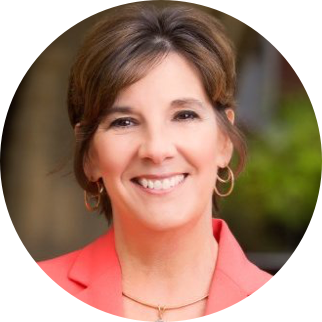In today’s world of a very mobile workforce, it seems like employees are coming and going faster than we can keep up. I am sure that sounds like an understatement to many human resource professionals and recruiters. But don’t forget the compliance professionals when you talk about the impact of turnover on your organization. They too have a vested interest in making sure all the pre-hire checks are completed timely and accurately. Not to mention, the on-going monitoring of employees which must take place once the person changes from a candidate to a successful hire. Failing to meet the needs of state and federal employee screening is a very real compliance risk and one that, at times, can be a bit confusing.
Healthcare Pre-Employment Screening
Let’s begin this discussion by perhaps stating the obvious, you cannot hire or employ a person that is excluded by the Office of Inspector General (OIG) if you are receiving any state or federal money for care. For most healthcare providers this means a component of your pre-hire screening must include a search of the OIG List of Excluded Individuals and Entities (LEIE) and your state Medicaid exclusion list if there is one. Currently, 42 states have a publicly available state Medicaid exclusion list.
We also know that if the job responsibilities require a license or certification, this too must be validated pre-hire. A healthcare provider cannot bill for services provided by an unlicensed professional if such license is a requirement. In practical terms, if you are billing for physician services or care provided by a registered nurse, to Medicare or Medicaid for example, you have to validate the candidate’s appropriate license and confirm that it is in good standing before they begin working. But what about at the time of services? We’ll discuss this scenario a little later below.
In addition to the search of the OIG LEIE, state Medicaid list, and license/certification verification, there are many things that must be considered before a candidate becomes an employee. Some additional pre-hire items likely include the following:
- Criminal background checks
- Drug screening
- TB test
- Checking of references
- Verification of education
It is important to differentiate between pre-hire and ongoing monitoring requirements. When we think about pre-hire requirements like those listed above, we typically envision a checklist containing all of these items. We create the checklist for each candidate, check off the items that are completed, create a personnel file and store the checklist and the proof that each of these requirements was properly vetted to prove, at any time, to an auditor or third-party requiring verification.
This initial process will be completed on or before the first day of employment and will be safely tucked away and likely never looked at again unless there is an audit or an issue that arises with the performance of an employee.
Healthcare Ongoing Employee Monitoring
Now let’s talk about the ongoing employee monitoring that must take place for two of the items that we also checked pre-hire. The two items are exclusion monitoring and license monitoring.
As previously stated, a healthcare provider cannot hire, employ, or bill for a person who is excluded or who does not have a valid license/certification. This means that we must continue to monitor for exclusions and make sure all of our employees have licenses in good standing throughout their employment. As a compliance officer, one cannot just check the item off on a pre-hire checklist and file it in the personnel file. Coming up with a process to conduct ongoing monitoring is so incredibly important for your program.
So how do you go about conducting ongoing monitoring? Well, there are many different ways to go about monitoring so let’s talk about a few of those methods in a bit more detail.
First, let’s start with monitoring the OIG-LEIE because this list is very predictable and available. The OIG-LEIE is always updated monthly and is always in the same format. If you download the available file, you know exactly what to expect.
OIG Inspector General Daniel Levinson told the Healthcare Compliance Association (HCCA) members in 2015, “we update the OIG-LEIE list monthly, and so you should check it monthly.”
How to Check the OIG LEIE and State Medicaid Lists
To check the OIG and state Medicaid exclusion lists you have three basic options; manual look-up; a semi-automated in-house solution, or hiring a third-party such as ProviderTrust to complete the monitoring for you. All of these options come with pros and cons. Below, we’ve provided an outline to help you distinguish some of the traits of each process.
Manual Process
Pros:
- Free
Cons:
- Labor intensive
- May miss matches due to nicknames, changed names, misspelled names
Semi-automated*
Pros:
- Free
- Reduces some manual effort
Cons:
- Manual verification of potential matches identified through automated system
- May miss matches due to nicknames, changed names, misspelled names
Third-party**
Pros:
- Monitors ALL federal and state exclusion lists
- Significantly reduces monitoring effort
- Provides central repository of monitoring activities
Cons:
- Cost
*Remember most state Medicaid lists do not have a CSV file that can be downloaded into your in-house system. Therefore, it is unlikely that an internal, semi-automated process will reduce much, if any, of the manual effort to complete your state Medicaid exclusion monitoring process.
**All third-party solutions are different so it is important to ask lots of questions surrounding monitoring and verification processes. At ProviderTrust, we pride ourselves on creating a robust monitoring solution immediately reducing the workload and risk for our clients. Our solution provides verified matches at the federal and state levels so you don’t have to spend any time confirming possible matches. However, that is not the case for all vendors, so make sure you are getting a comprehensive solution not just a slightly enhanced semi-automated system.
License Monitoring
Now that we have covered monitoring for state and/or federal exclusions, let’s talk about monitoring licenses. In my opinion, monitoring licenses are even more complicated than exclusion monitoring. Best practice is to monitor all 50 states, not just the state in which you operate. Here’s a quick hypothetical example to help back up my opinion.
A Wisconsin nursing home has an RN, Nurse Nancy, who started working at their facility on October 1, 2017. The facility completed all of the necessary pre-hire checks and confirmed Nurse Nancy had a WI RN license in good standing (no sanctions or disciplinary actions).
What the facility didn’t know is that in July of 2017, Nurse Nancy worked in Minnesota and was investigated for possible drug diversion. Between the time the investigation began and was concluded; Nurse Nancy got her RN license in WI and began working at the Wisconsin nursing home.
In December 2017, Nurse Nancy’s drug diversion investigation was completed in MN and the MN Board of Nursing suspended her license.
So in this hypothetical, if you were only monitoring Nurse Nancy’s WI RN license you would not know that she had a drug diversion issue and had a suspended license in MN. I think most compliance professionals and H/R professionals would agree that we want to know if we have a nurse with an action taken against their license regardless of which state.
As you know, there are hundreds if not thousands of licensing boards across all 50 states and all different disciplines. Imagine trying to monitor just one discipline across all 50 states for all your licensed staff. It becomes a nightmare and nearly impossible without some type of third-party assistance. The result of this difficult, manual process is increased risk to your organization. Recognizing it is nearly impossible to conduct this type of manual license monitoring, it is equally as unrealistic to think your staff is conducting this type of monitoring. Most likely, you are monitoring for expirations of licenses and only one time a year, or every two or three years as the license is due for renewal.
Think about what you may be missing by only monitoring a professional license and/or certification upon its expiration. Pretty scary right? As a former compliance officer, I understand that pre-hire and ongoing screening can be a bit confusing. That’s why our team is here to help with many years of experience under our belt. Feel free to reach out to me or Michael Rosen, or visit our Resource page for the latest webinars, ebooks, and healthcare compliance data.
Written by Donna Thiel, Chief Compliance Officer
Donna Thiel is the Director of our Compliance Integrity team, a consulting division of ProviderTrust. Donna works with compliance officers across the country to help reduce the stress and anxiety of this very difficult role.










